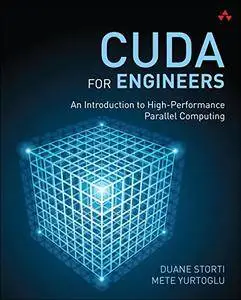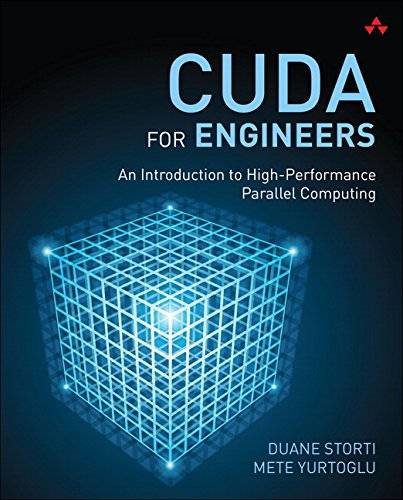CUDA for Engineers: An Introduction to High-Performance Parallel Computing by Mete Yurtoglu
English | 2 Nov. 2015 | ISBN: 013417741X | 352 Pages | PDF | 9.24 MB
English | 2 Nov. 2015 | ISBN: 013417741X | 352 Pages | PDF | 9.24 MB
CUDA for Engineers gives you direct, hands-on engagement with personal, high-performance parallel computing, enabling you to do computations on a gaming-level PC that would have required a supercomputer just a few years ago.
The authors introduce the essentials of CUDA C programming clearly and concisely, quickly guiding you from running sample programs to building your own code. Throughout, you’ll learn from complete examples you can build, run, and modify, complemented by additional projects that deepen your understanding. All projects are fully developed, with detailed building instructions for all major platforms.
Ideal for any scientist, engineer, or student with at least introductory programming experience, this guide assumes no specialized background in GPU-based or parallel computing. In an appendix, the authors also present a refresher on C programming for those who need it.
Coverage includes
Preparing your computer to run CUDA programs
Understanding CUDA’s parallelism model and C extensions
Transferring data between CPU and GPU
Managing timing, profiling, error handling, and debugging
Creating 2D grids
Interoperating with OpenGL to provide real-time user interactivity
Performing basic simulations with differential equations
Using stencils to manage related computations across threads
Exploiting CUDA’s shared memory capability to enhance performance
Interacting with 3D data: slicing, volume rendering, and ray casting
Using CUDA libraries
Finding more CUDA resources and code
Realistic example applications include
Visualizing functions in 2D and 3D
Solving differential equations while changing initial or boundary conditions
Viewing/processing images or image stacks
Computing inner products and centroids
Solving systems of linear algebraic equations
Monte-Carlo computations



